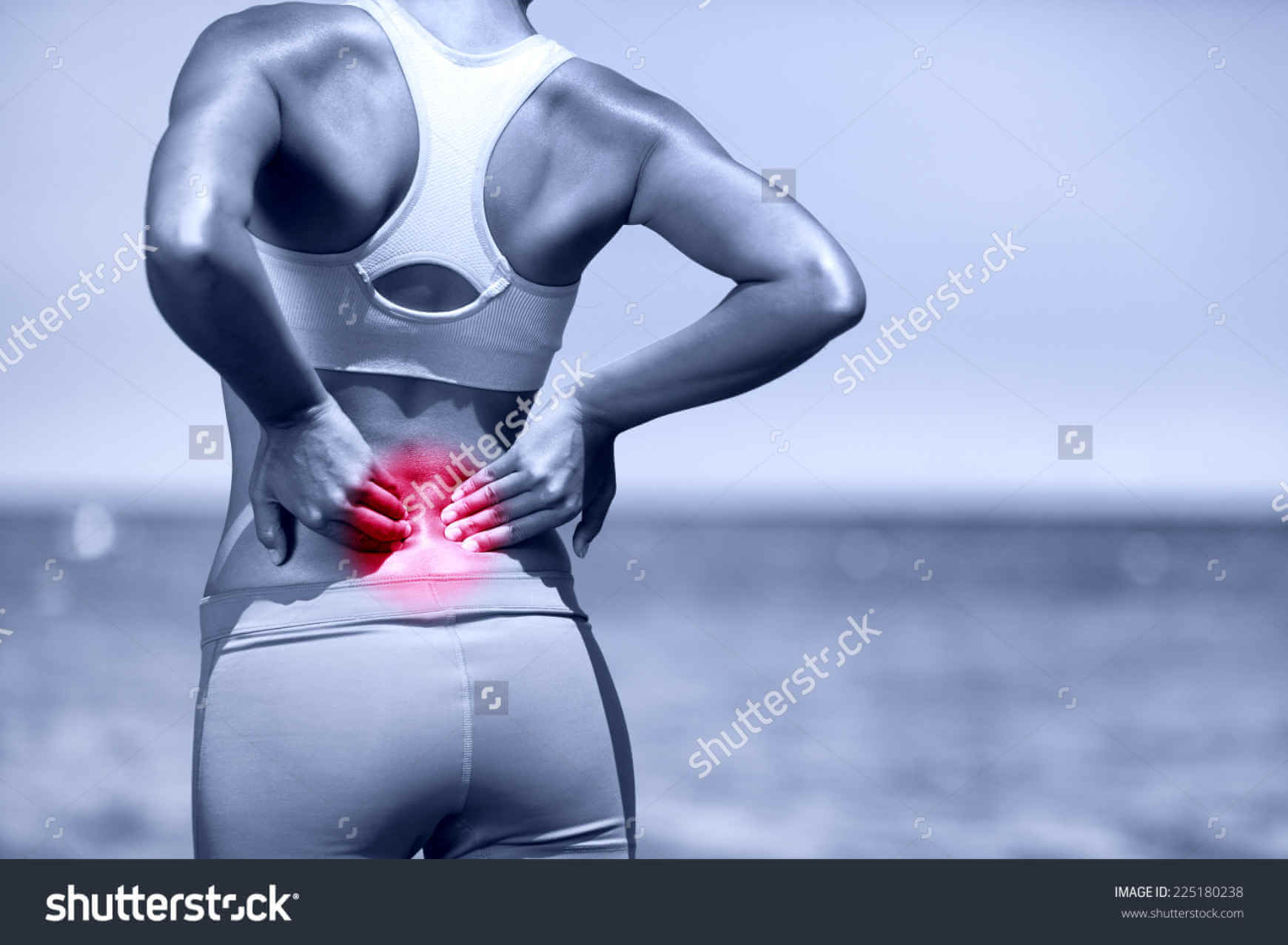How Dry Needling Can Help with Frozen Shoulder (Adhesive Capsulitis): A Science-Backed Approach to Pain…

The Low Back Pain Injury: Treatment and financial considerations with acupuncture and herbal therapy.
Lumbar disk herniation usually occurs from degenerative disk disease (dessication of the annulus fibrosis) in patients between 30- and 50-year-olds. The L5/S1 disk is affected in 90% of the cases. Compression of neural structures, such as sciatic nerve, causes radicular pain. The most common activity leading to herniation is usually bending or heavy loading (such as lifting) with back in flexion, which leads to a herniation or extrusion of the disk contents.
The key symptoms for diagnosis include:
- Pain with back flexion or prolonged sitting.
- Radicular pain with compression of spinal structures.
- Lower leg numbness.
- Lower leg weakness.
Low back pain is the second most common cause of missed workdays due to illness and the most common cause of disability in the US. Most episodes of back pain are self-limited, but 5%-10% of cases become chronic. Chronic conditions account for 90% of healthcare expenditures for back pain and amount to approximately $50 to $80 billion dollars annually.
Many patients mistakenly attribute the onset of their back pain to a specific injury, however, the actual injury from activity such as bending over, twisting, or lifting, is often trivial. Much of the time, low back pain is from the culmination of chronic injury and cumulative trauma relative to the person’s general health. Physically active and energetically healthy people have a lower incidence of back pain than those who lead an imbalanced and sedentary lifestyle.4
From the perspective of East Asian Medicine, Kidney Qi manages the strength of the low back. When the Kidney Qi is strong, the low back is strong; when Kidney Qi is weak, the low back is weak. The poor posture plus the following factors can lead to low back pain: Weak Kidney Qi combined with invasion of Cold and Dampness, plus Stagnation of Qi and Blood.4
Treatment methods vary between East and West. From the Western allopathic perspective, bed rest for up to 48 hours is appropriate for acute exacerbation of symptoms followed by first-line treatments of: activity modification; NSAIDS, physical therapy, core stabilization exercises and McKenzie exercises.1 2 3 The incidence of low back pain recurrence after one year of nonsurgical treatments is at least 40%.1 2 3 Corticosteroid injections can be beneficial, especially when used to relieve acute pain, but the results tend to only last three months. Surgery is usually suggested after all other conservative measures have failed. 1 2 3
From the Eastern perspective, a combination of acupuncture, herbs, TuiNa (medical massage) and QiGong (movement exercises) can help the body reduce pain, improve flexibility, increase mobility and enable the patient return to their activities of daily living. Patients in my private practice regularly report that within 6-8 weeks of weekly acupuncture treatments and herbs, they are 90% recovered with very few—if any—pain recurrences. The benefits of using an acupuncture and herbal approach is that often the pain levels can often be reduced to the point where the patient rarely requires surgery or additional drug therapies (corticosteroid injections) that have long-lasting, adverse side effects.
The cost effectiveness of non-operative treatments, such as acupuncture, is an important consideration point:
- Surgical discectomy w/ fusion (no complications/with comp.) $41,363/$55,575
- Repeat surgical procedure (often required multiple times): $28,019
- Lost productivity (work, caregiver, housework): $59.71/hour
____________________
Surgical and lost productivity total: $69,441.71
An average acupuncture treatment costs $75/session. A conservative treatment plan would require weekly treatments for six months. Herbs cost an average of $85/month for six months. The total cost for treatment with acupuncture and herbs for six months is approximately: $2,310.00. Most modest insurance plans have high deductibles between $2500 and $5000. Therefore, a patient must often spend between $2500 and $5000 before surgery is covered. While acupuncture and herbal therapies are not always the correct solution for patients with low back pain, it is clear that an initial expenditure of $2,310.00 in an effort to potentially save $69,44.71 in surgical expenses makes good financial sense. The added benefit of acupuncture therapy is that complications from surgery can often be averted if acupuncture and herbal therapy is effective, which also helps reduce overall costs.
Acupuncture and herbal therapy is an excellent choice for the patient who wishes to save money, prevent surgical complications and is interested in a holistic approach to healing.
ABOUT THE AUTHOR:
Nathan J. Heide, M.S., L.Ac.
Mr. Heide is founder and CEO of Anjuna Medicine, LLC in Eugene, Oregon. Anjuna Medicine (www.AnjunaMedicine.com) is a private practice, focusing on integrative pain management solutions for chronic and recalcitrant diseases by using traditional East-Asian medical techniques. Mr. Heide is a graduate of Pacific College of Oriental Medicine (San Diego) and a current doctoral fellow at Oregon College of Oriental Medicine in Portland, Oregon.
Lumbar disk herniation usually occurs from degenerative disk disease (dessication of the annulus fibrosis) in patients between 30- and 50-year-olds. The L5/S1 disk is affected in 90% of the cases. Compression of neural structures, such as sciatic nerve, causes radicular pain. The most common activity leading to herniation is usually bending or heavy loading (such as lifting) with back in flexion, which leads to a herniation or extrusion of the disk contents.
The key symptoms for diagnosis include:
- Pain with back flexion or prolonged sitting.
- Radicular pain with compression of spinal structures.
- Lower leg numbness.
- Lower leg weakness.
Low back pain is the second most common cause of missed workdays due to illness and the most common cause of disability in the US. Most episodes of back pain are self-limited, but 5%-10% of cases become chronic. Chronic conditions account for 90% of healthcare expenditures for back pain and amount to approximately $50 to $80 billion dollars annually.
Many patients mistakenly attribute the onset of their back pain to a specific injury, however, the actual injury from activity such as bending over, twisting, or lifting, is often trivial. Much of the time, low back pain is from the culmination of chronic injury and cumulative trauma relative to the person’s general health. Physically active and energetically healthy people have a lower incidence of back pain than those who lead an imbalanced and sedentary lifestyle.4
From the perspective of East Asian Medicine, Kidney Qi manages the strength of the low back. When the Kidney Qi is strong, the low back is strong; when Kidney Qi is weak, the low back is weak. The poor posture plus the following factors can lead to low back pain: Weak Kidney Qi combined with invasion of Cold and Dampness, plus Stagnation of Qi and Blood.4
Treatment methods vary between East and West. From the Western allopathic perspective, bed rest for up to 48 hours is appropriate for acute exacerbation of symptoms followed by first-line treatments of: activity modification; NSAIDS, physical therapy, core stabilization exercises and McKenzie exercises.1 2 3 The incidence of low back pain recurrence after one year of nonsurgical treatments is at least 40%.1 2 3 Corticosteroid injections can be beneficial, especially when used to relieve acute pain, but the results tend to only last three months. Surgery is usually suggested after all other conservative measures have failed. 1 2 3
From the Eastern perspective, a combination of acupuncture, herbs, TuiNa (medical massage) and QiGong (movement exercises) can help the body reduce pain, improve flexibility, increase mobility and enable the patient return to their activities of daily living. Patients in my private practice regularly report that within 6-8 weeks of weekly acupuncture treatments and herbs, they are 90% recovered with very few—if any—pain recurrences. The benefits of using an acupuncture and herbal approach is that often the pain levels can often be reduced to the point where the patient rarely requires surgery or additional drug therapies (corticosteroid injections) that have long-lasting, adverse side effects.
The cost effectiveness of non-operative treatments, such as acupuncture, is an important consideration point:
- Surgical discectomy w/ fusion (no complications/with comp.) $41,363/$55,575
- Repeat surgical procedure (often required multiple times): $28,019
- Lost productivity (work, caregiver, housework): $59.71/hour
____________________
Surgical and lost productivity total: $69,441.71
An average acupuncture treatment costs $75/session. A conservative treatment plan would require weekly treatments for six months. Herbs cost an average of $85/month for six months. The total cost for treatment with acupuncture and herbs for six months is approximately: $2,310.00. Most modest insurance plans have high deductibles between $2500 and $5000. Therefore, a patient must often spend between $2500 and $5000 before surgery is covered. While acupuncture and herbal therapies are not always the correct solution for patients with low back pain, it is clear that an initial expenditure of $2,310.00 in an effort to potentially save $69,44.71 in surgical expenses makes good financial sense. The added benefit of acupuncture therapy is that complications from surgery can often be averted if acupuncture and herbal therapy is effective, which also helps reduce overall costs.
Acupuncture and herbal therapy is an excellent choice for the patient who wishes to save money, prevent surgical complications and is interested in a holistic approach to healing.
1 Jacobs W et al. Total Disc replacement for chronic back pain in the presence of disc degeneration. Cochrane Database Syst Rev. 2012 Sep 12;9:CD008326
2 Rihn JA et al. Duration of symptoms resulting from lumbar disc herniation: effect on treatment outcomes: analysis of Spine Patient Outcomes Research Trial (SPORT). J Bone Joint Surg Am. 2011 Oct 19;93(20):1906-14.
3 Suri P et al. Recurrence of radicular pain or back pain after nonsurgical treatment of symptomatic lumbar disk herniation. Arch Phys Med Rehabil. 2012 Apr;93(4);690-5.
4 Callison M. Treatment of Orthopedic Disorders: A Class Manual. 2nd Ed. 2007 AcuSport Seminar Series LLC:114-157.
5 Callison M. Treatment of Orthopedic Disorders: A Class Manual. 2nd Ed. 2007 AcuSport Seminar Series LLC:114-157.



